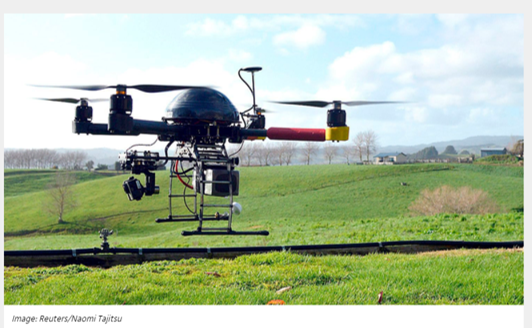K
Kathleen Martin
Guest
As the commercial use of drones continues to accelerate, making them increasingly integral to the effective and efficient functioning of certain sectors, the global drone industry is predicted to be worth about $43 billion by 2024, with some 2.7 million drones already in operation by 2020.
The latest research indicates that the global drone market is set to grow at a conservative rate of 16% year-on-year, with exponential investment growth resulting in $6.88 billion invested in the drone industry since 2010.
Similarly, South Africa’s fledgling drone market is also on a growth trajectory, estimated to reach $134.5 million by 2025, according to a report by IndustryARC. The research house found that local market expansion is underpinned by growth in the mining industry, developments in more data-accurate drone technology, the presence of dominant players in hardware and niche applications.
“What we’re seeing is that the increase in global investment has resulted in an increased number of drone applications and density of drones within an airspace. For example, Australia has about a million drones in operation, with estimates that 8% of the population now own a drone,” says Greg Dillon, Lead – Sport, Events, Entertainment & Drones at specialist insurer iTOO.
Diverse and effective platform
Drones are being adopted by an increasing number of industry sectors as they offer a diverse and effective platform, either as a drone service provider or as an internal business service. The various applications include inspection/maintenance, mapping, surveying, photography/filming, monitoring, localisation/detection, drone delivery and spraying/seeding.
“The uptake of drones across various industry sectors is driven by a strong focus on time and quality. Companies tend to deploy drones to gain time and cost savings, as well as to improve quality and work safety,” says Dillon.
He explains that, with the rapid growth of commercial drone adoption, there is room to evolve an insurance-based product that, as an active risk management insurer’s tool, covers the in-flight portion of drone operations, where this is typically excluded from most insurance policies.
Continue reading: https://www.iol.co.za/technology/techsperts/drone-boom-driving-operational-efficiency-safety-and-cost-savings-713831bb-ec4a-4414-8c53-6ef786cf8f04
The latest research indicates that the global drone market is set to grow at a conservative rate of 16% year-on-year, with exponential investment growth resulting in $6.88 billion invested in the drone industry since 2010.
Similarly, South Africa’s fledgling drone market is also on a growth trajectory, estimated to reach $134.5 million by 2025, according to a report by IndustryARC. The research house found that local market expansion is underpinned by growth in the mining industry, developments in more data-accurate drone technology, the presence of dominant players in hardware and niche applications.
“What we’re seeing is that the increase in global investment has resulted in an increased number of drone applications and density of drones within an airspace. For example, Australia has about a million drones in operation, with estimates that 8% of the population now own a drone,” says Greg Dillon, Lead – Sport, Events, Entertainment & Drones at specialist insurer iTOO.
Diverse and effective platform
Drones are being adopted by an increasing number of industry sectors as they offer a diverse and effective platform, either as a drone service provider or as an internal business service. The various applications include inspection/maintenance, mapping, surveying, photography/filming, monitoring, localisation/detection, drone delivery and spraying/seeding.
“The uptake of drones across various industry sectors is driven by a strong focus on time and quality. Companies tend to deploy drones to gain time and cost savings, as well as to improve quality and work safety,” says Dillon.
He explains that, with the rapid growth of commercial drone adoption, there is room to evolve an insurance-based product that, as an active risk management insurer’s tool, covers the in-flight portion of drone operations, where this is typically excluded from most insurance policies.
Continue reading: https://www.iol.co.za/technology/techsperts/drone-boom-driving-operational-efficiency-safety-and-cost-savings-713831bb-ec4a-4414-8c53-6ef786cf8f04

